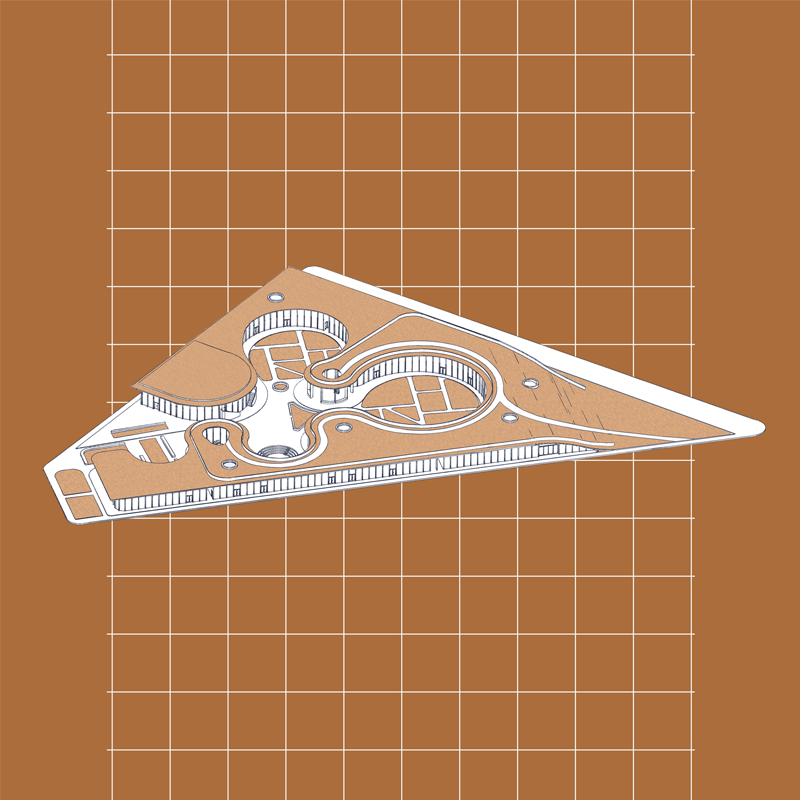

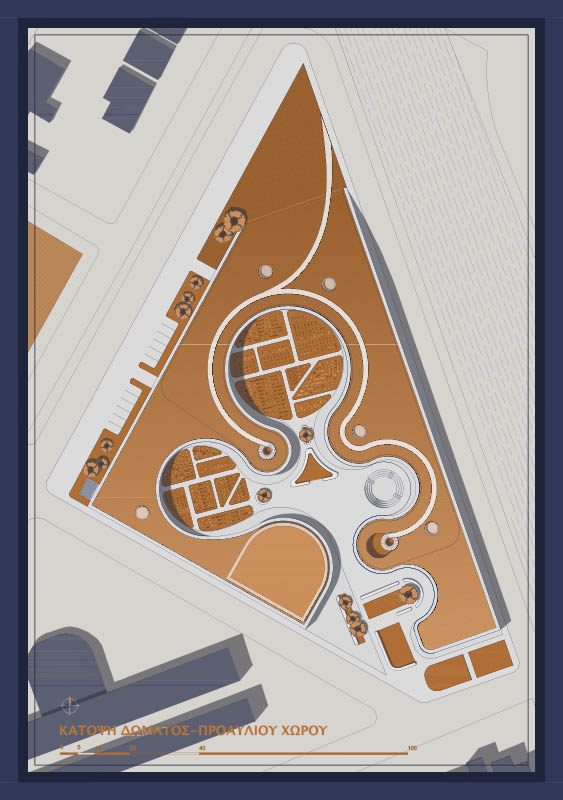

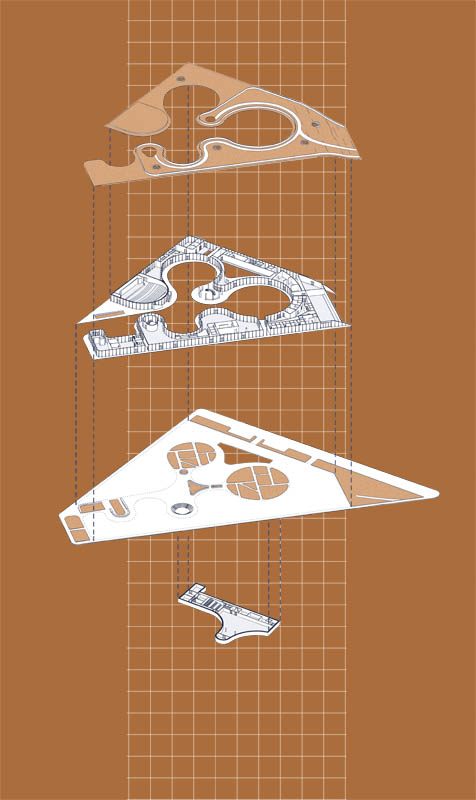

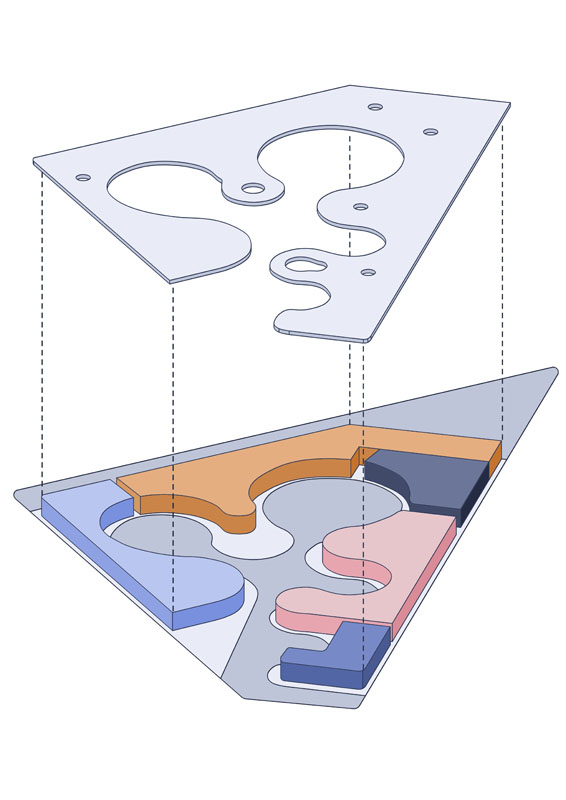

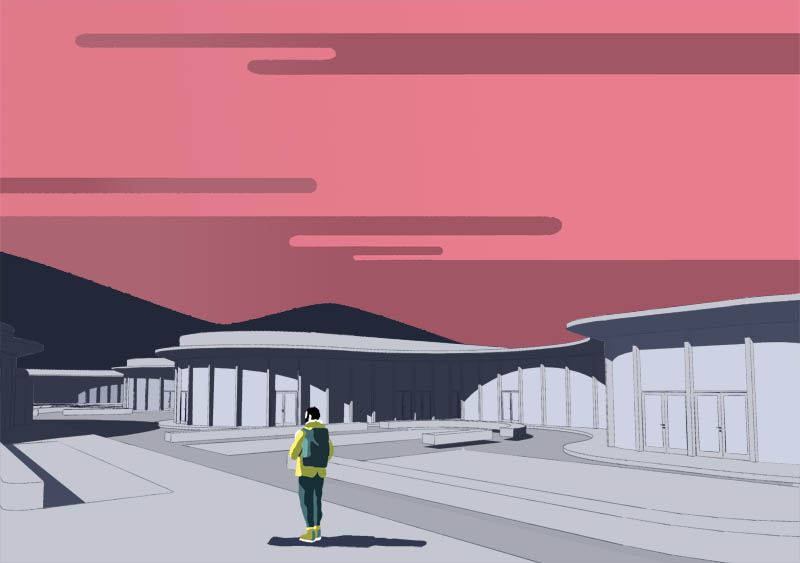

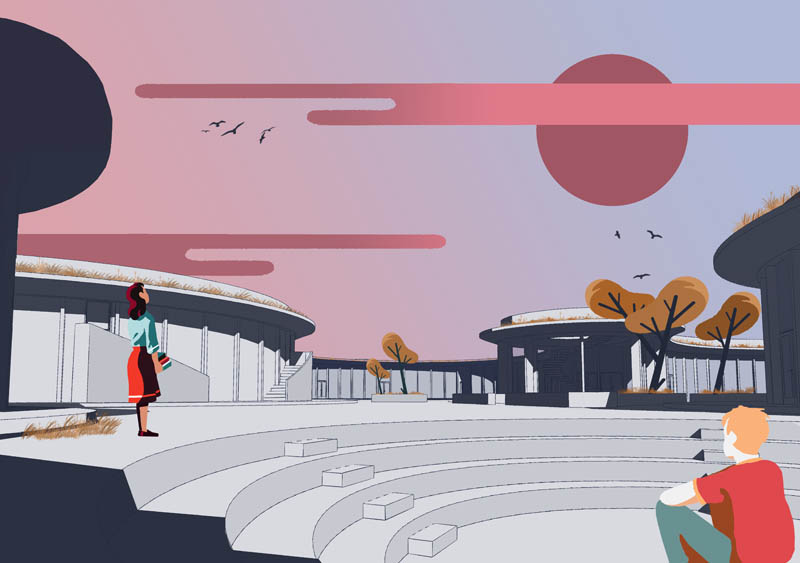

In the early 4th century and for the following five centuries, the Garden of the Epicurus’ philosopher was operating in the area of Athens, a place of gathering and accommodation, staying of people, of both genders and all ages, single or not, where in the interiors of the building and in the gardens people were philosophizing on topics like bliss, psychology, astronomy and cosmology.
Since 1992, with the United Nations Conference on Environment and Development (UNCED) in Rio and Agenda 21, Human Rights of the Third Generation became a priority. The Sustainability-durable, as an alternative way of living that seeks to return and harmoniously reintegrate man into the environment in which he has been created and to seek for clean technological solutions for sustainable cities. The two above events - although they took place in different times, move towards the same direction of values and were the initiative for this diplomatic paper.
The theme of this diploma thesis is the creation of a sustainable bioclimatic building complex at the Polytechnic School of the University of Thessaly at the Field of Areos area in Volos (Magnesia, Greece) as an area of providing culture and entertainment and its aim is not only the qualitative upgrading of the city’s environment, but also the protection of the urban heritage, the open spaces, the green networks of the area and the cultural spaces in and around the city of Volos, as well as the need for quality life for the future generations. Its design is based on the principles of bioclimatic design that addresses free space, buildings and residential complexes as an interdependent unit that is directly related, influence and it is influenced by the atmosphere of the place.
At the same time, with this architectural argumentation it is stated that the Ecological Structure and Bioclimatic Architecture in collaboration with many branches of Natural Sciences, Agriculture, Construction Engineering and Ecology can function as a mechanism of friendly action for the environment. In this multipurpose complex were incorporated areas for vertical agriculture and open urban areas for cultivation, as Urban Agriculture, and in particular the technical - urban model of Vertical Farming in buildings, is becoming a reality all over the world that affects the urban ecosystem in a variety of ways with direct benefits for society, economy, culture, the environment and the welfare of the citizens.
Supervisor: Mitroulias Giorgos
Reference Number: 745
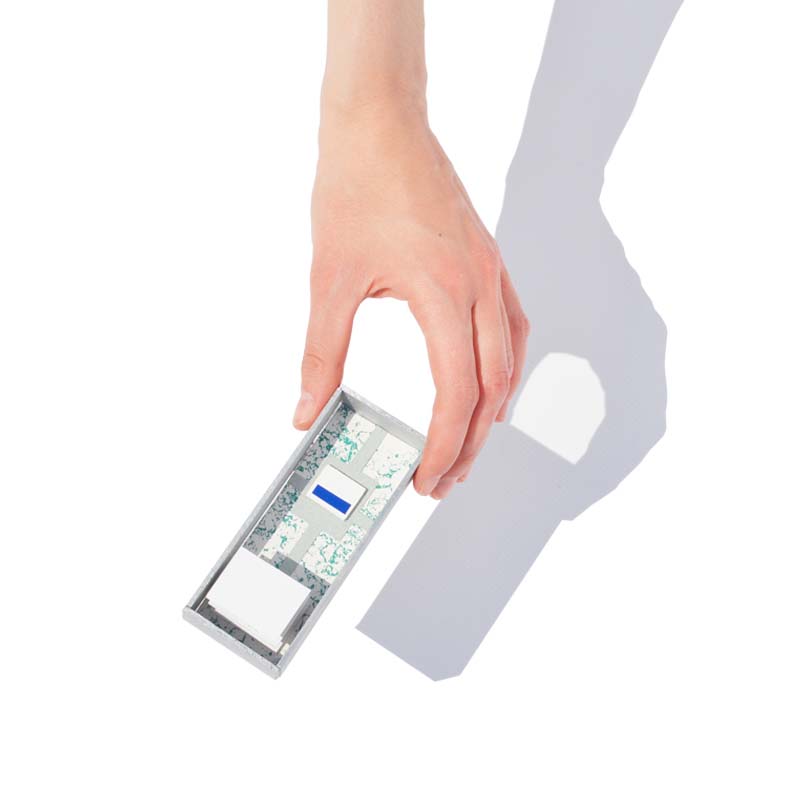

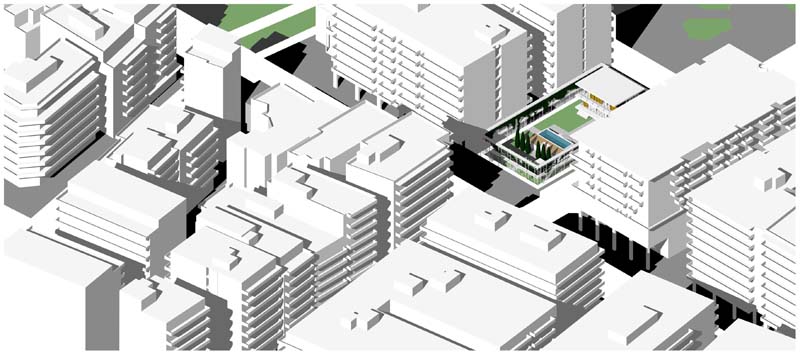

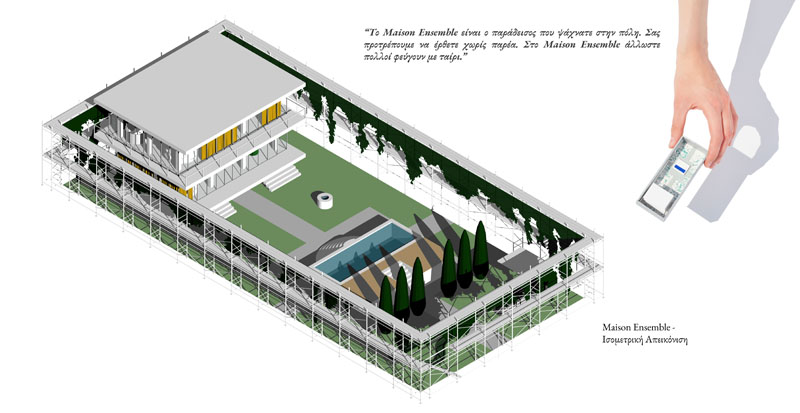

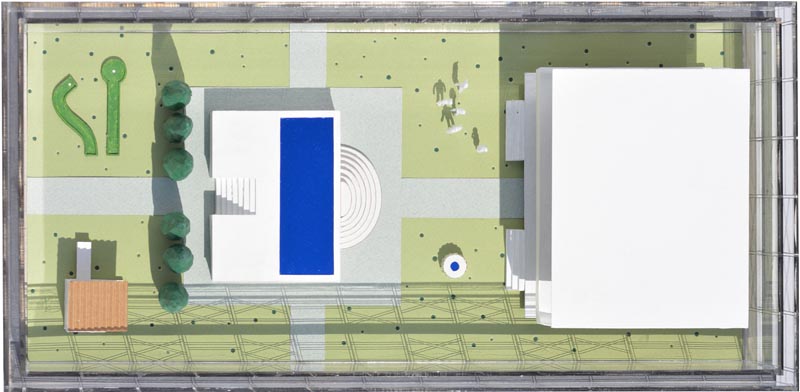

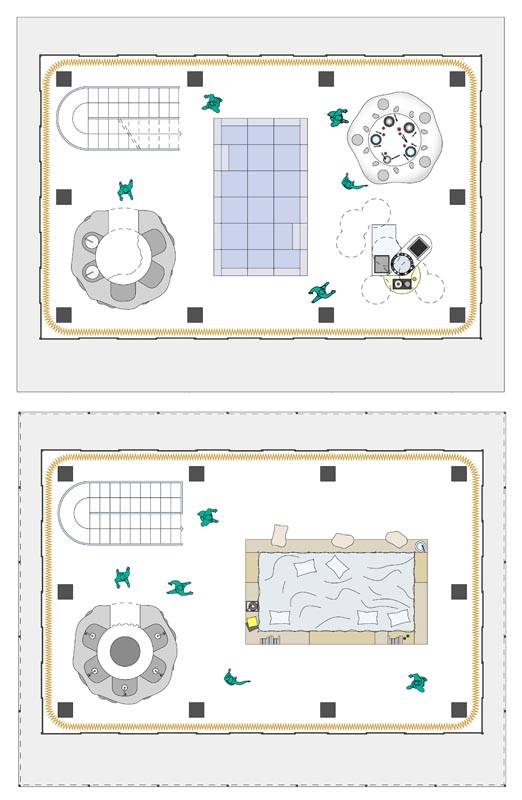



Maison Ensemble is the urban paradise you were looking for. We advise you to come alone. There are a lot of people leaving from Maison Ensemble with company.
This thesis quotes a series of texts referring to the close relation between Medicine and Architecture. It focuses on specific architectural practices -that under a curative angle-, tried a remediation of our living environments. Furthermore, we investigate how this practices perpetually shaped a dwelling role model and a human role model as well, ideal to inhabit it. That consumption is made clear, by reading the amount of architectural handbooks that appeared during Modernism, where all the ideal dwelling and human characteristics are analyzed. However, this categorization formed the environments we live in, according to the single human unit, promoting in this way an individualized way of living.
Our proposal attempted to examine the architectural practices mentioned above, to rethink the places we live, now formatted for a group of people and not for the single unit and to revise as well the entire dwelling tactics. Therefore, we designed a small two-story house and the amount of household devices-rooms that constitute it, specially shaped to host a small group of people.
The house is located inside Greek city and it is available to let only temporary. Our investigation on Greek city, focused on the way it digested some Modernistic elements, that changed in a great manner its identity. Furthermore, we were highly interested on how dwelling is shaped in Greek city, as well as how it affects the places we live in.
Our thesis examined all the topics mentioned above, under a critical, an architectural and a theoretical approach and converted them into Maison Ensemble and a revised co-dwelling model.
Supervisors: Mitroulias Giorgos, Tzirtzilakis Yorgos
Reference Number: 755
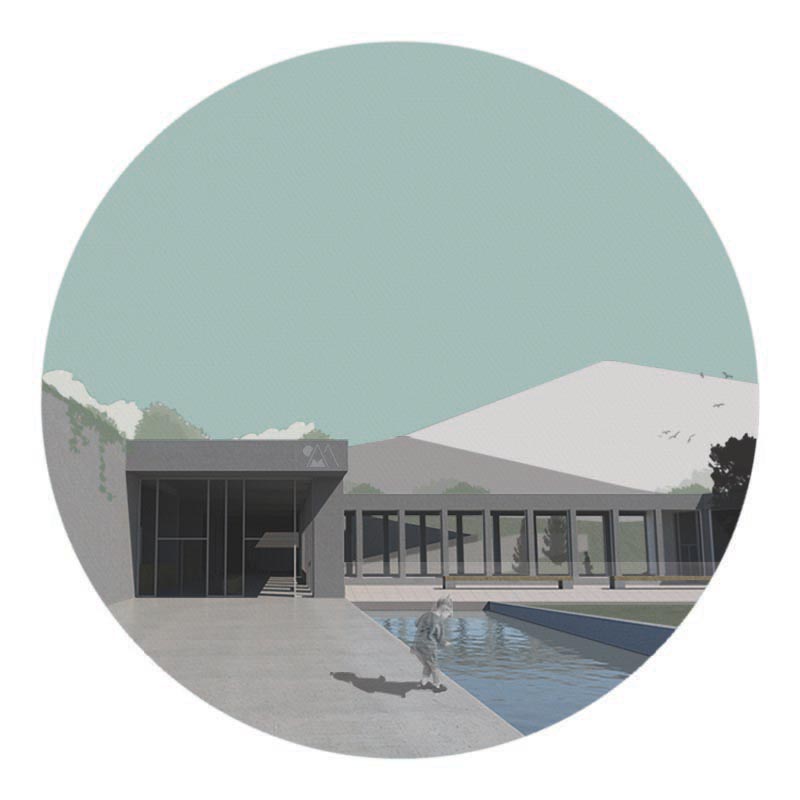

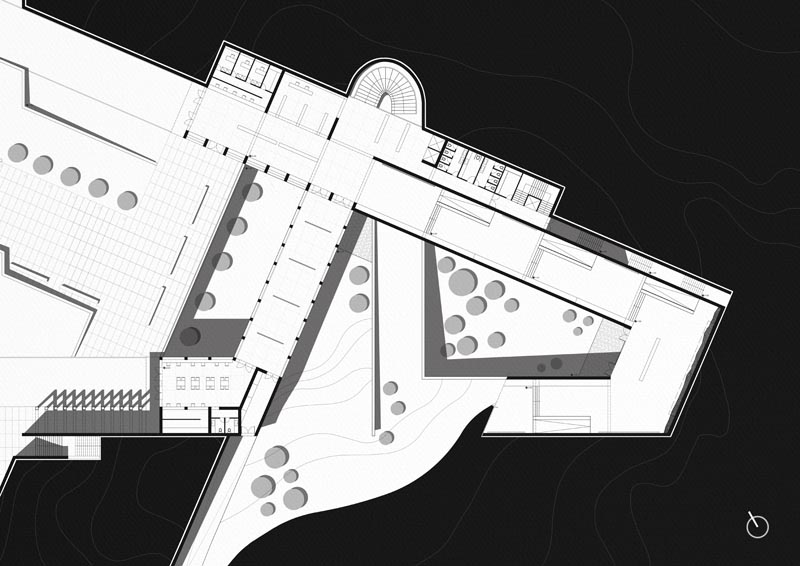

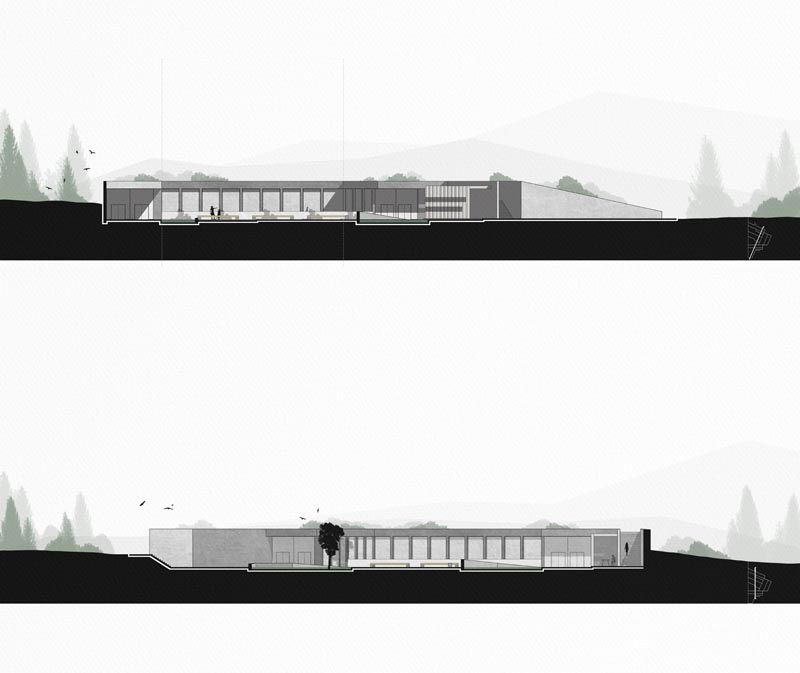

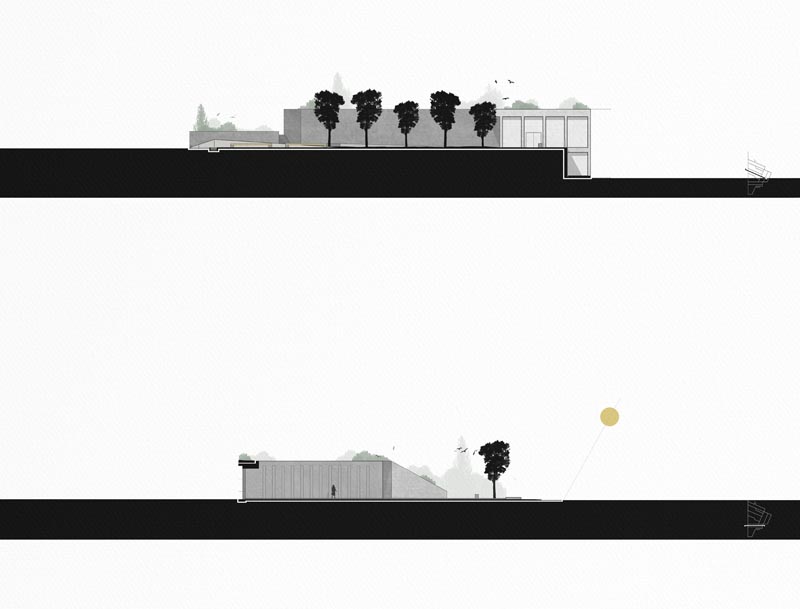

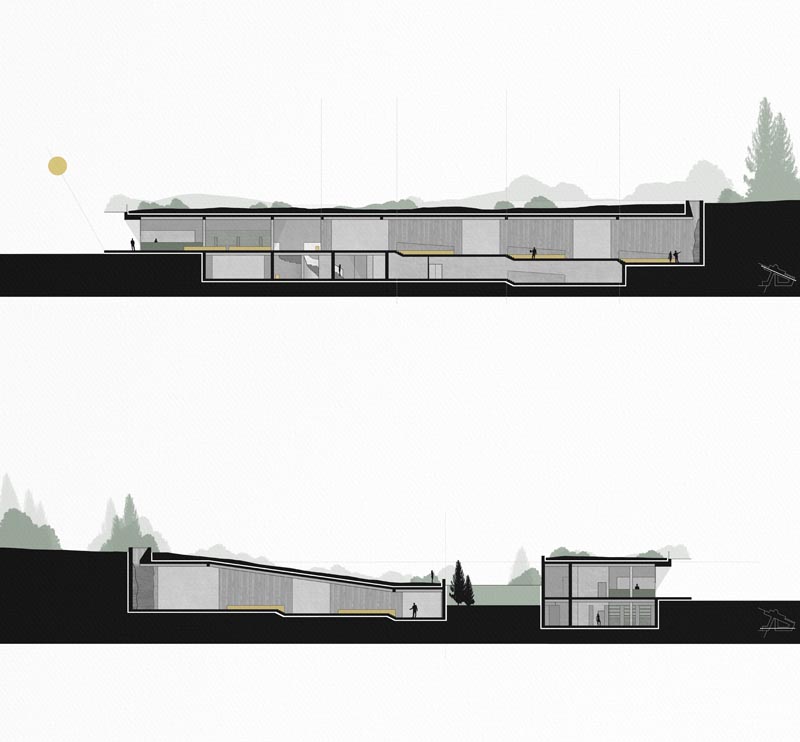



Hymettus is the mountain of Attica region, which is the nearest mountain to the center of Athens. As a volume, it undoubtedly has a great ecological importance, as it is a natural reserve where many species of flora and fauna harmoniously live. But his wealth has received a lot of anthropogenic activities that have had negative effects. Hymettus is the "yard of our Athenian home" and we have to protect it.
At the area of Agia Paraskevi, which extends to the eastern edge of the Athenian basin to the mountain mass of Hymettus, there are problems of connecting the urban tissue with the natural environment of the mountain. A structured boundary by privately owned facilities in the Hymettus suburban zone makes it impossible for the inhabitants to approach.
At the same time, the few public open-air spaces or green areas, as well as the few cultural spaces available to Agia Paraskevi, seem to emphasize the need for an area that will meet the needs of the inhabitants, having at the same time a supralocal character.
The solution to the problem may be the creation of a museum and its open-air public space. The museum refers to the history of Hymettus, to its coexistence with people, to the myths and the related science. It is a place of culture that offers its visitors a unique experience of interconnection with nature and culture, in a place where the subjects learn what the urban mountain really means to humans. A museum where acquaintance with the visitor will not be limited to one visit but will create the pleasure of repetition because every new visit, depending on the time, will bring new images and new experiences, a sense of friendliness and the possibility of encounter and interaction.
Supervisor: Papadopoulos Spiros
Reference Number: 753




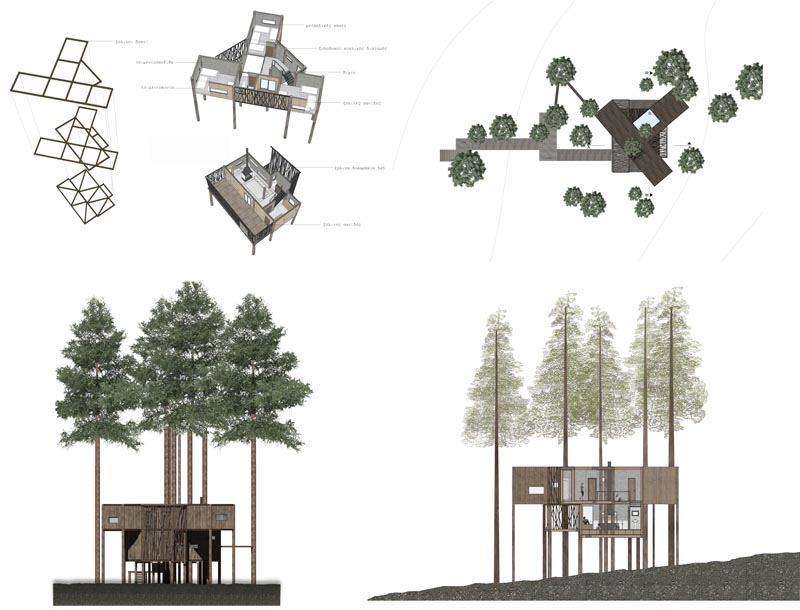

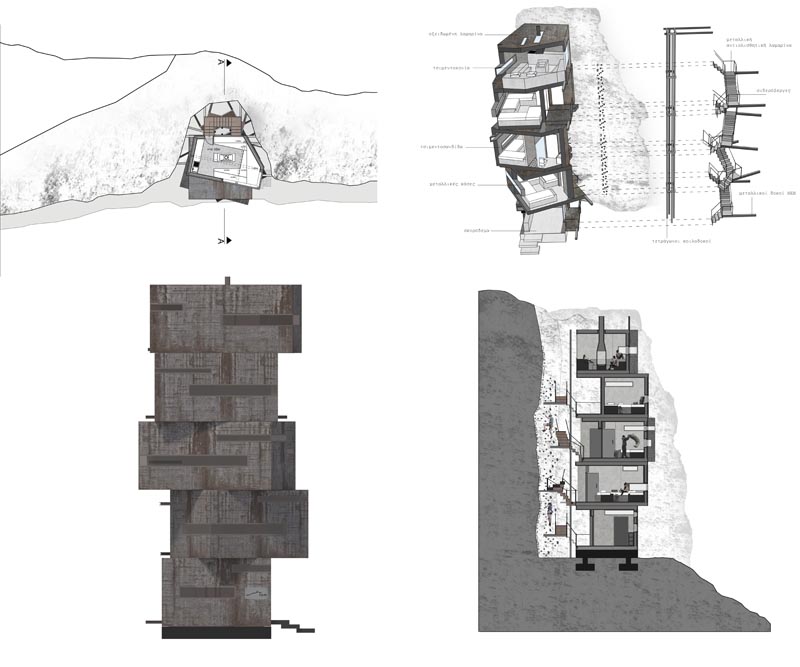



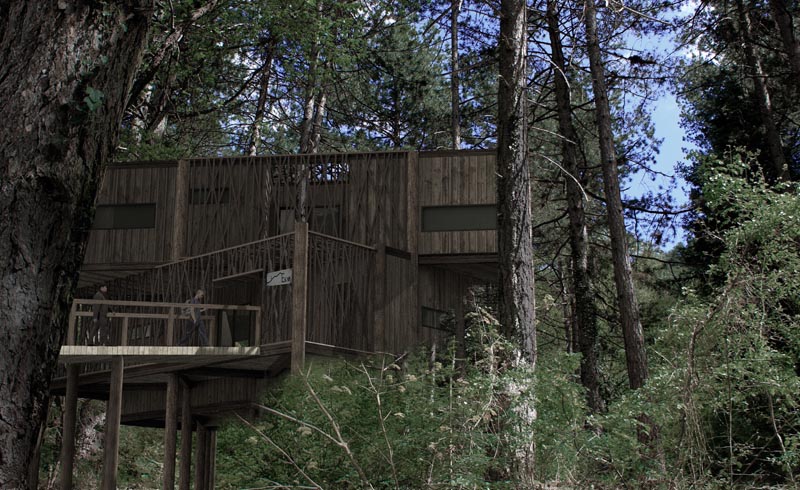

The present thesis deals with the design of a program, called MountEscape, which promotes extreme sports, including the construction of 3 shelters - activity stations serving the program. Zagorohoria were chosen, as a place of intervention, and more specifically the mountaineering route starting at Konitsa Bridge and leading up to Drakolimni of Tymfi.
By crossing this route, one encounters a large and impressive alternation of landscapes, as it starts from the banks of Aoos river, in an environment dominated by water, continues through the dense forest and ends in a harsh rocky area without vegetation, until it meets the Drakolimni and reach the peak of Tymphi mountain. At the same time, this landscape alternation offers the ideal conditions for doing a wide variety of extreme or not extreme sports. Taking advantage of this intervention, the shelters are placed at focal points, dividing the various sport activities into thematic sections and strategically breaking the route into smaller pieces, so that climbing can be made in a pleasant way. As a consequence, each shelter is different from the others, as it attempts to be harmonized and integrated into the natural landscape, which is a logic being expressed through a personal interpretation of the environment in which each of them is located.
As far as the program is concerned, in addition to promoting extreme sports, it aims to enhance the area, people's contact and relationship with nature, to highlight and contribute to the development of sports and educate the members. Finally, attention has been paid to its organization, in order to comply with the legislation on this environmentally protected area, concerning both the purpose of its creation and existence, and the shelter’s constructional regulations.
Supervisor: Paniyiris Costis
Reference Number: 764


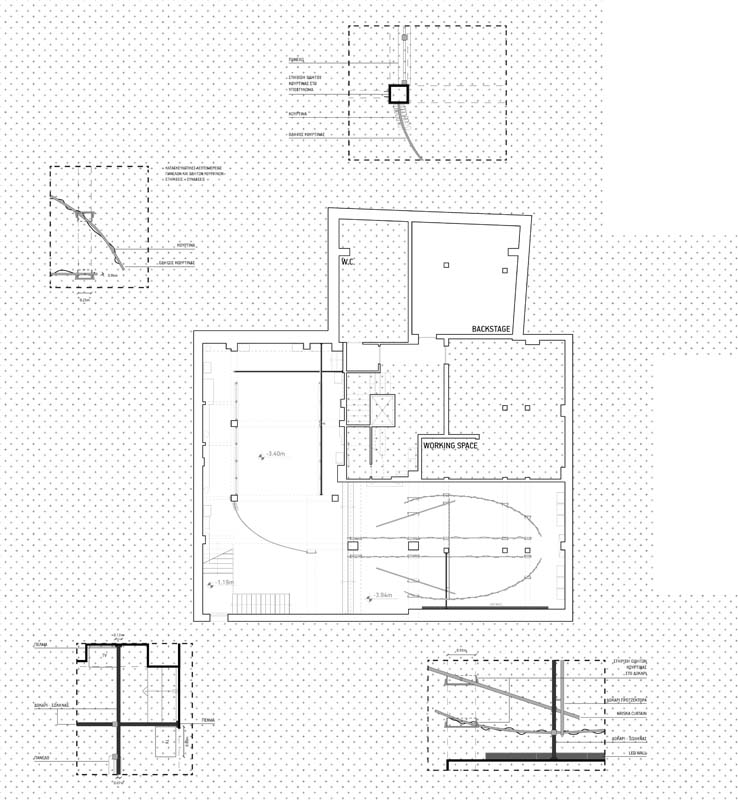







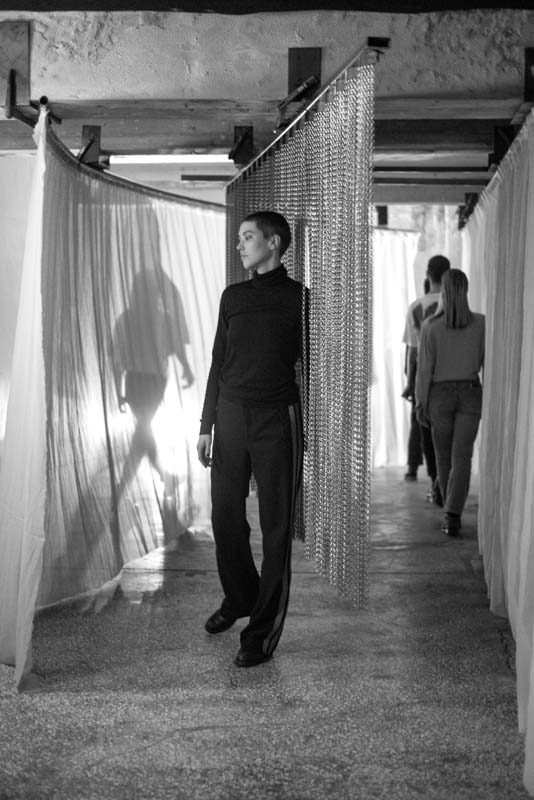

This particular diploma thesis constitutes the continuation of my theoretical thesis entitled " NERVOUSYSTEMS: Ecologies of the fashion show from the modern to the contemporary era. Introduction to the Guerrilla Show". It is based on a personal experimentation regarding the fashion show system, by examining it with a extra-institutional intention, and by proposing an artistic and political approach. The fashion show system remains the same since its appearance, a century ago, with some exceptions during the '80s and the '90s with the birth of the conceptual fashion designer; however its core remains unchanged as well as its place in the annual calendar and the logic of designing its space.
Within this project, the conceptualisation of an extra-institutional idea is being recorded and also analysed not only theoretically but also practically through processes of research, experimentation, designing and realisation tests. It is about the presentation of a fashion show proposal which is situated between the limits of a conceptual fashion show and a performance and it's called Guerrilla Show. The Guerrilla Show was realised in Athens, at the Romantso creative hub in collaboration with a Canada based fashion designer, Maida Ghide, and her brand Annafora, and with the artist Fotios Balas. It is crucial to mention that the typologies of a formal fashion show weren't followed, neither the rules defining space, time, dates, internal hierarchies, rows and purpose. The project focused in designing the space as well as bodily movement, including that of the models, of the staff and of the audience within this overall choreography.
The guerrilla concept is linked to the element of surprise, thus the final outcome of the show remains partially uncertain, definitely to the audience, but also to the designer and producer. The final observations that are realised, after designing and realising the show, are of equal importance regarding research, understanding and presenting such an idea to a third person. Within these observations lies the power of an experimental action which is defined by and depends on the continuous interaction, by setting questions about the limits between spectator and spectacle, within the contemporary artistic and cultural stage, based on one of the most organised and established systems of spectacle of the century.
Supervisors: Gavrilou Evelyn, Psychoulis Alexandros
Reference Number: 731


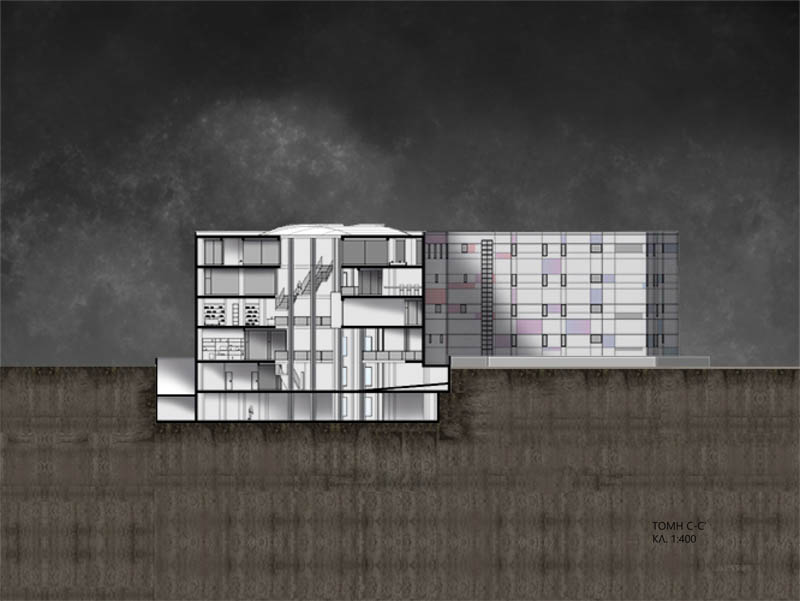

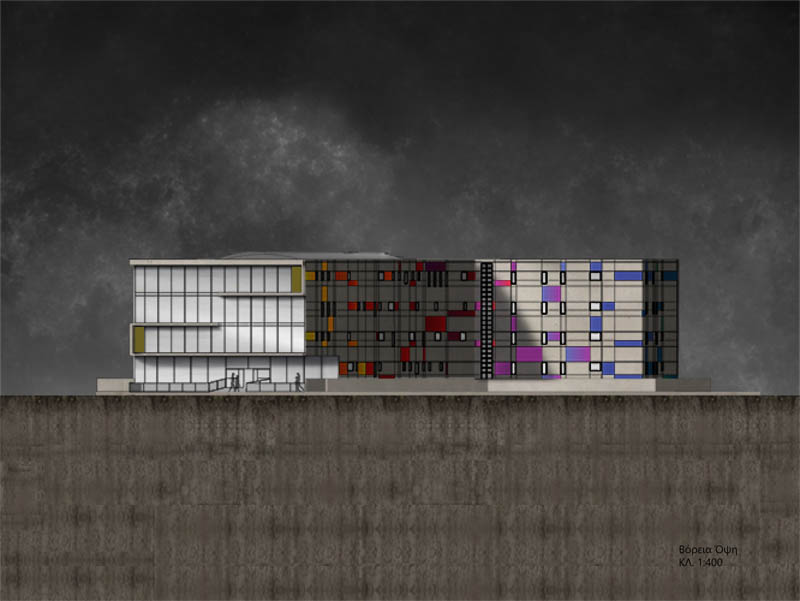



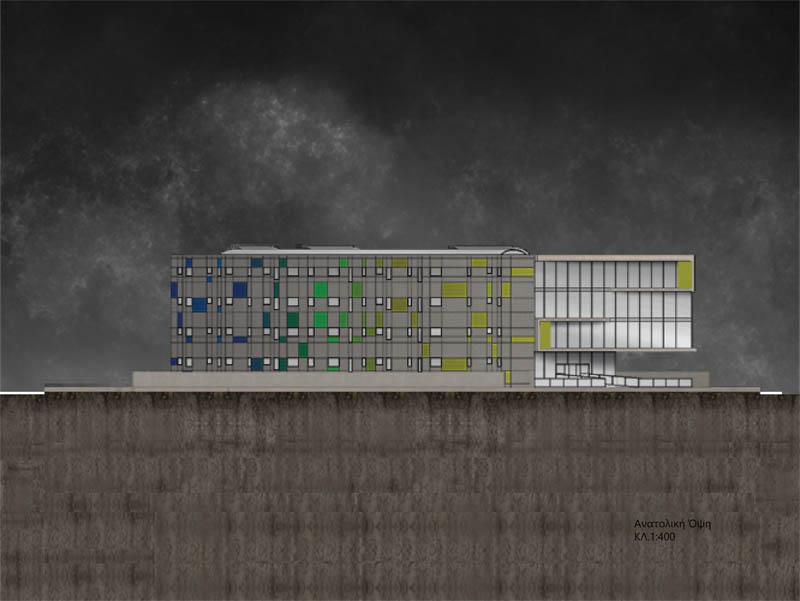

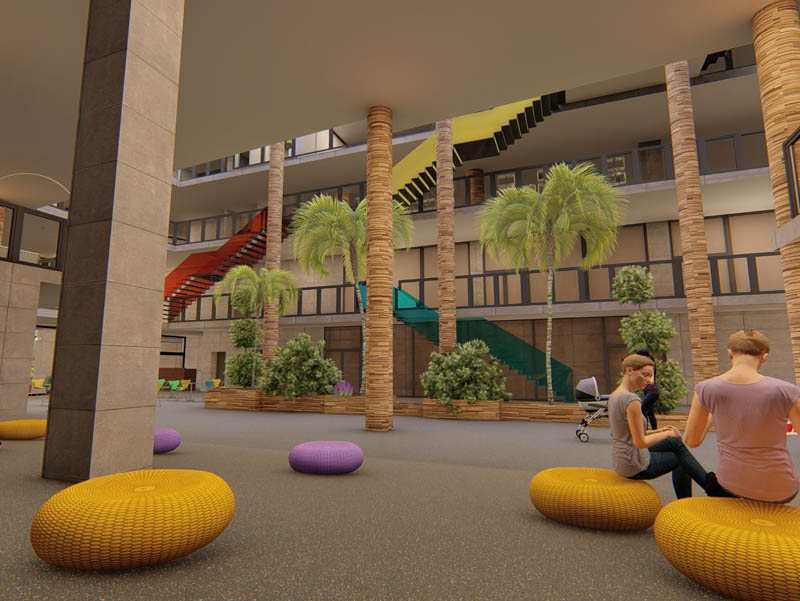

The present Bachelor’s thesis is based in the public consultation that is taking place in the society of Cyprus for the creation of a space for its exploitation by the youth organizations of the island.
The General idea constitutes a desire of three youth organizations of Cyprus, Cyprus Youth Organization, Cyprus Youth Council and Cyprus Organization Centers of Youth. Purpose is the creation and design of a place where the organizations will be housed together under the same roof. Firstly, the reasons that led to this proposal is to create a youth center in Nicosia were all young people regardless of age, social group, language or religion has access to a range of activities that are not easily accessible to all. Additionally, the program is supported from reports of the Cypriot Ministry of Finance, proposing the collapse of the above organizations in the same space.
The ideas regarding the uses that the multi-functional center will offer, were set after a meeting held with senior representatives of the organizations. The building program then, drawn up jointly. Moreover, the following research, after recognizing the various options for creating this kind of center within the city, ultimately suggests the space where the program could successfully host. The aim of the overall plan is to create the plan into a realistic basis so it can be adopted by the organizations for exploitation.
The Center will be named as Nicosia Youth Center (N.Y.C.). Except for those already mentioned, it will contain additional spaces for use by young people for programs relating to the above mentioned organizations. For example, youth training programs, skills enhancement programs, career guidance offices and psychological helpdesks for young people. The rest of the building though, it can be used by any young person who is interested to a series of activities to be done in the building like libraries, collective work spaces, and workshops. N.Y.C's building program completes with entertainment and relaxation areas such as cafes, gymnasiums, climbing walls, ballroom and pop up shops.
Supervisor: Trova Vasso
Reference Number: 748


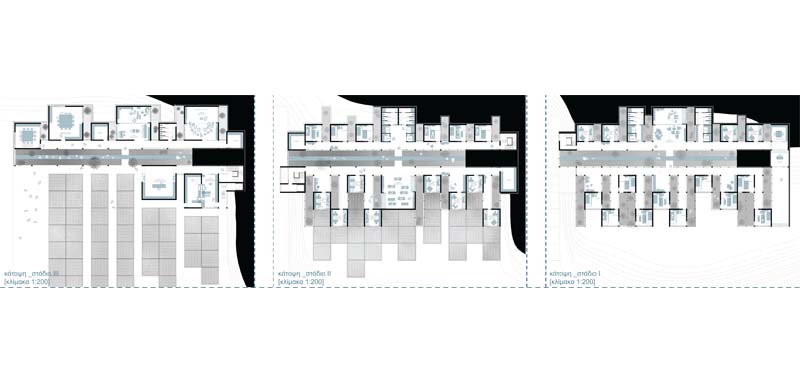



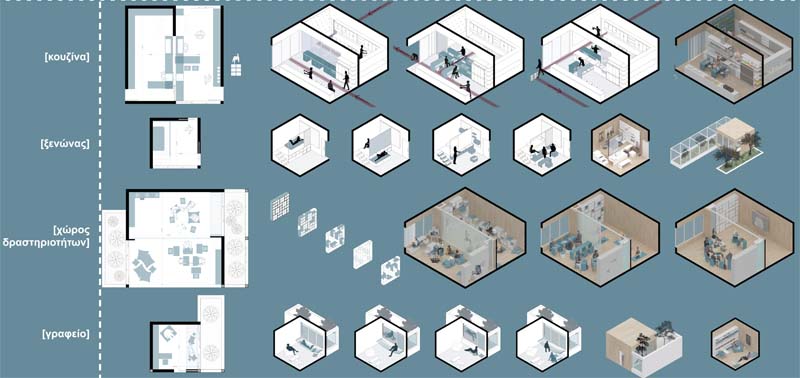

The present project (thesis) deals with the design of a center for the therapy of eating dis- orders in Tritsis park. The lack of specialized infrastructures in Greece, along of the continu- ously increasing number of patients, has been the motivating thought behind the creation of such an experimental center. The redefinition of the alimentation space, the offering of the desired alimental socialization degree to the patient, and his/her gradual reintegration into society have been the central design axis for this project. Following our research and a series of interviews with specialized therapists and patients in the Greek Center for Eating Dis- orders, we arrived at the Maudsley method as the therapy model to be applied in our center. This approach outlines the building morphology, translating the three therapy phases into the corresponding three stages of accommodation, according to the degree of the patient’s recovery. The vast arable fields available, the park’s position within the urban boundaries and its historic importance during the World War II and the German occupation, in which period the park fed a large part of the population of Athens, constituted the reasons that lead us to select Tritsis park. The implementation of the three stages of therapy, in terms of space, is applied in three levels, which follow the park landscape. In modern society, and in a different refeeding frame, we support that the involvement of the person under treatment with raw materials may be part of treatment. Therefore, we reinforce urban agriculture within the cen- ter as well as the cooperation with external bodies/entities in order to increase the orientation and education of the public with regard to nutrition, and in the longer term, give prominence and bring out the quality and definition of the park as an agricultural center.
Supervisor: Paniyiris Costis
Reference Number: 728


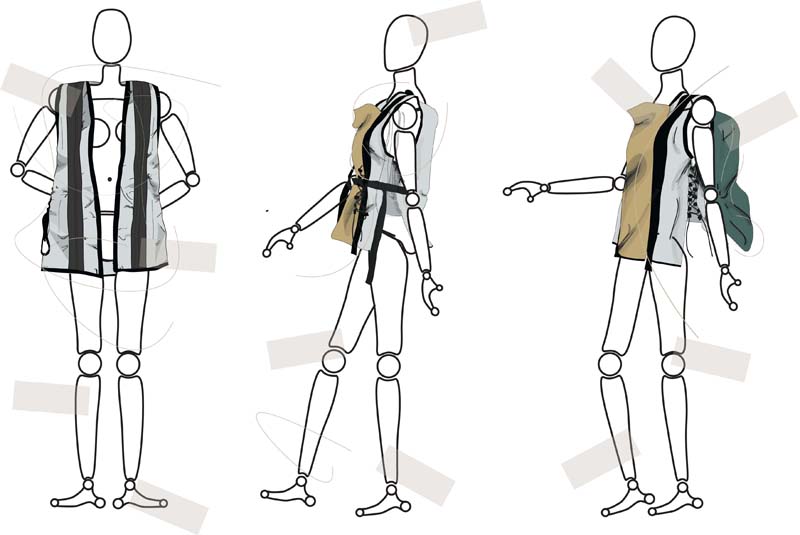

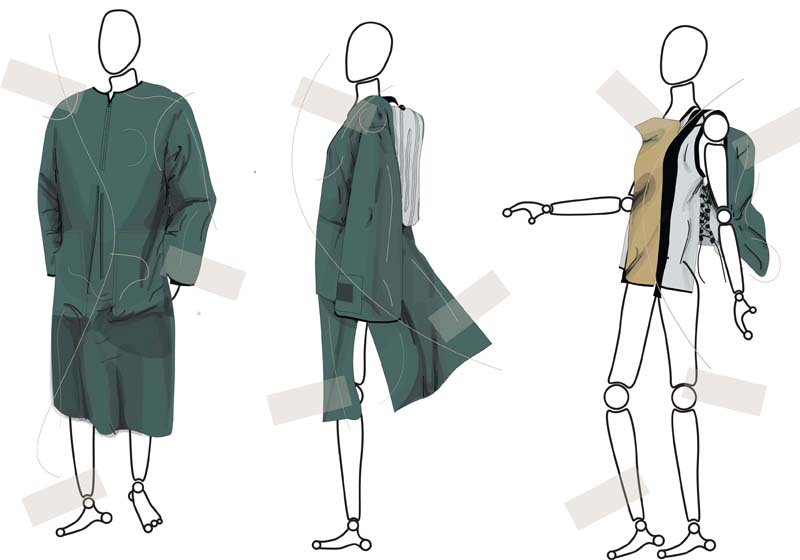

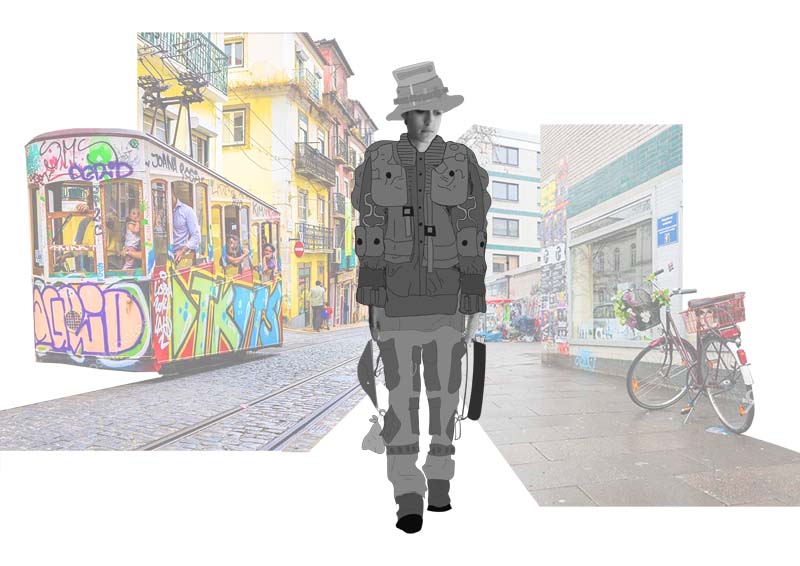

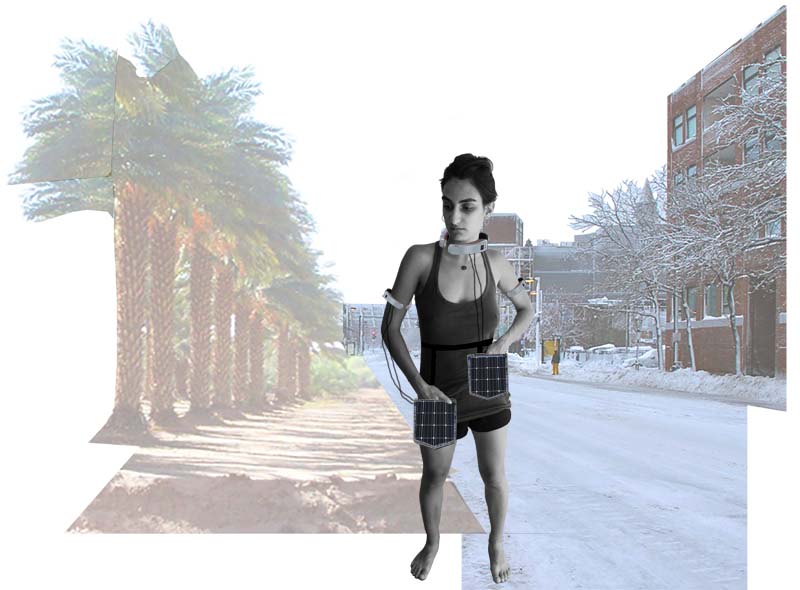



This project is a result of observing the people around us, who come and go, move frequently, feel like locals in more than three cities, in different countries each. Based on this, we outlined the modern subject that is the center of our interest. We have cho-sen garments as primarily objects of arbitrary but also necessary clues, as protection and conversation bases and of course for their status as the most social objects. We have treated them as lodgings of this modern subject, wanting to comment on the notion of habitation, which can now take place in all the material and spiritual goods that this contemporary subject in motion carries at all times. Therefore, the notion of habitation ceases to require the house as a necessary feature of it.
The project "ODYSSACK" consists of the homonymous product we created and on the same time, to the "Odyssey" of con-struction and designing this specific clothing system. In particular, this product is a garment - a carrier of things, which on one hand, is an omen in modern nomadism and, on the other hand, promotes a way of life in which subjects are able to choose their paraphernalia according to desire - and not only usefulness -, so they adapt to a lifestyle that includes a small number of material things and they learn behind everything that is unnecessary. The result of our research and design is characterised by the elements of variability and adaptability, based on the belief that the uses of objects give more possibilities when they are double or non-specific, while their use results from a creative conciliation process with the subject, so that objects acquire a personal character more easily. Finally, an important element in the process of doing this work was the established forms of clothing available on the market which are incapable of including body diversity. When products manage to meet the extremes of a spectrum of subjects, then with them the average can take care of themselves.
Supervisors: Gavrilou Evelyn, Kotionis Zissis
Reference Number: 732

